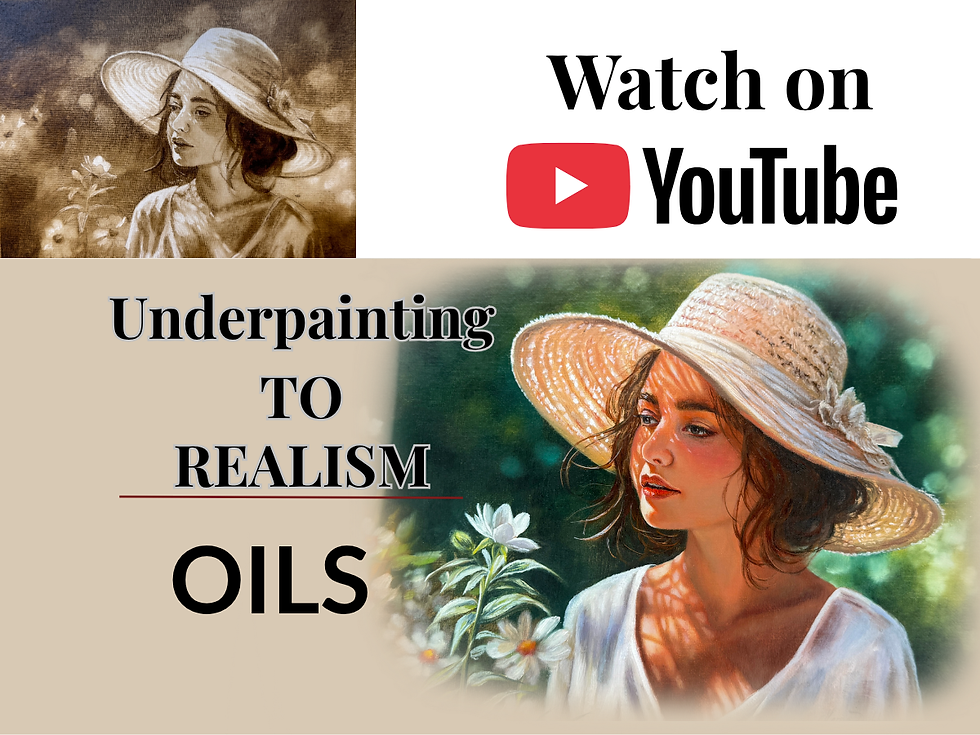Ripened Reflections | A Study in Light, Glaze, and Stillness
- Marion Dutton

- Nov 6
- 2 min read
There’s something timeless about painting fruit & vegetables; it’s a subject that invites patience, precision, and quiet observation. In Ripened Reflections, I wanted to slow everything right down and explore how the humble tomato can become a study in light itself.
This project takes a classical underpainting and glazing approach, building luminosity layer by layer until the colour seems to glow from within. It’s not just about painting food; it’s about learning to see - the soft fall of light, the way reflections shift on a curved surface, and how subtle temperature shifts can create the illusion of depth and form.
Building the Foundation
Every classical painting begins with structure — and this one is no exception. I started with a raw umber underpainting, using just four tones to establish my value range and anchor the composition.
At this stage, I’m not thinking about colour at all. My focus is on light logic — deciding where the form turns, where the soft reflected light lives, and how the shadow edge will breathe against the background. These decisions, made early, are what give the finished piece its quiet authority.
Layering the Colour
Once that foundation was in place and fully dry, I began introducing transparent colour glazes. The key here is restraint — each glaze should whisper, not shout. The richness came from thin veils of crimson and alizarin, layered patiently until the light seemed to pulse through the surface and for the green tomato layers of transparent sap green.
This is where everything begins to take shape. Once the glazes had settled, I began to refine — working in those crucial transitions where light melts into shadow. A few carefully placed opaque strokes brought the form forward, while soft scumbles of warm and cool tones added life to the reflected areas beneath.
The highlight was added last, a small, confident touch that makes the surface feel alive. It’s easy to overdo this stage, but the magic lies in restraint. Every stroke should serve the illusion of realism without drawing attention to itself.
At this point, I stepped back. The fruit glowed — not from the paint itself, but from the careful orchestration of light through layers. That’s the reward of glazing: a depth you simply can’t achieve any other way.
A Reflection in Red
In Ripened Reflections, it wasn’t just about painting tomatoes and garlic — it was about capturing that moment of quiet warmth when afternoon light falls across simple objects and makes them extraordinary.
The glossy skin of the tomatoes, the papery delicacy of the garlic, and the subtle play of warm light against cool shadows — each demanded a slightly different touch. Glazing allowed the reds to deepen without ever becoming heavy, and the whites to glow without looking chalky.
This piece is a gentle reminder that mastery comes not from speed, but from stillness — from giving the paint, and yourself, the time to breathe between layers
Watch the Full Tutorial
You can watch the full Ripened Reflections oil painting tutorial on my YouTube channel, where I walk through every step — from underpainting to glazing — in real time.









